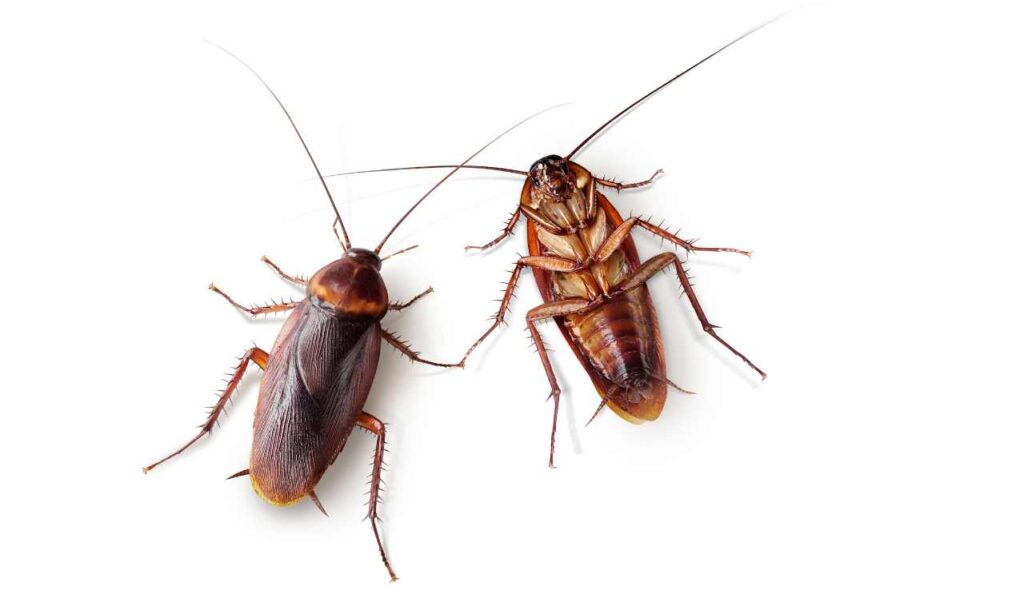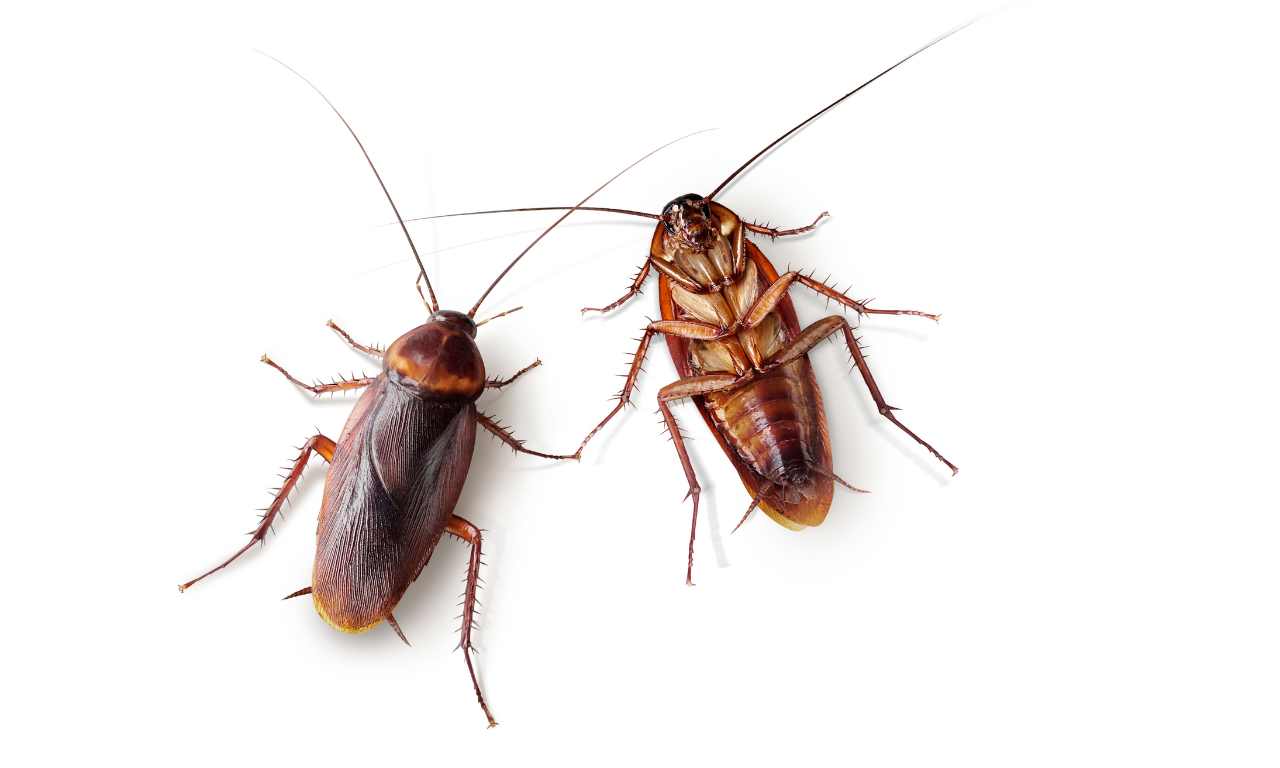
 Cockroaches can resort to cannibalism in certain situations where there is a scarcity of food or when their population density is high. Cannibalism can also be influenced by hormones, with some studies suggesting that the presence of certain hormones in cockroaches can increase the likelihood of cannibalistic behavior.
Cockroaches can resort to cannibalism in certain situations where there is a scarcity of food or when their population density is high. Cannibalism can also be influenced by hormones, with some studies suggesting that the presence of certain hormones in cockroaches can increase the likelihood of cannibalistic behavior.
Under normal conditions, cockroaches are opportunistic feeders and will eat a wide range of food sources, including plants, fungi, and other insects. However, when their food sources are limited, they may turn to feeding on each other as a survival mechanism.
Additionally, high population densities can lead to competition for resources, such as food and shelter. In such situations, cockroaches may engage in cannibalism as a means of reducing population size and increasing the chances of survival for the remaining individuals.
In laboratory settings, experiments have shown that nymphs (young cockroaches) are more likely to engage in cannibalism than adult cockroaches. This may be due to the fact that nymphs have a higher metabolic rate and need a greater amount of food to survive.
It’s important to note that while cannibalism can occur in cockroach populations, it is not a common behavior and is typically seen only in specific, stressed conditions. In most cases, cockroaches will avoid cannibalism and prioritize other food sources.
Does Eating Each Other Harm Them?
Cannibalism among cockroaches can have both positive and negative effects on their survival and population.
On one hand, cannibalism can help regulate population density and ensure that resources are not depleted. By reducing population size, the remaining individuals are more likely to have access to food and shelter, increasing their chances of survival.
However, cannibalism can also have negative effects on the health and survival of cockroaches. For example, when cockroaches feed on each other, they may consume individuals that are sick or injured, potentially spreading diseases or parasites to the rest of the population.
In addition, cannibalism can also lead to the transfer of toxic substances from one individual to another. Cockroaches have a gland in their thorax that produces a toxic secretion that can deter predators. When a cockroach feeds on another individual, it may consume this toxic secretion, which can cause harm to its own health.
Moreover, cannibalism can also disrupt the social hierarchy and reproductive success of cockroaches. In some species of cockroaches, dominant individuals are more likely to mate and reproduce, while subordinate individuals may be unable to do so. By engaging in cannibalism, individuals may disrupt the social hierarchy and reduce their own chances of mating and reproducing.
Cannibalism among cockroaches can also have implications for human health and well-being. For example, cockroaches can carry a variety of pathogens and parasites that can cause disease in humans. By engaging in cannibalism, cockroaches may increase the transmission of these pathogens, potentially increasing the risk of disease.
Do Cockroaches Eat Their Young?
Yes, in some cases, cockroaches can engage in cannibalism and eat their own offspring.
Cockroach cannibalism can occur when food is scarce or when population densities are high, leading to competition for resources such as food and shelter. In these situations, adult cockroaches may feed on their own eggs or young in order to reduce population size and increase their own chances of survival.
However, it’s important to note that this behavior is not common and typically occurs only in specific, stressful conditions. In most cases, cockroaches will prioritize other food sources and avoid eating their own offspring.
Cannibalism can also be influenced by hormones, with some studies suggesting that the presence of certain hormones in cockroaches can increase the likelihood of cannibalistic behavior. In laboratory settings, experiments have shown that nymphs (young cockroaches) are more likely to engage in cannibalism than adult cockroaches. This may be due to the fact that nymphs have a higher metabolic rate and need a greater amount of food to survive.
The consequences of cockroach cannibalism on the survival and health of the population can be complex. On one hand, cannibalism can help regulate population density and ensure that resources are not depleted, increasing the chances of survival for the remaining individuals.
On the other hand, cannibalism can have negative effects on the health and well-being of the population. For example, when cockroaches feed on their own eggs or young, they may consume individuals that are sick or injured, potentially spreading diseases or parasites to the rest of the population.
Additionally, cannibalism can also disrupt the social hierarchy and reproductive success of cockroaches. In some species of cockroaches, dominant individuals are more likely to mate and reproduce, while subordinate individuals may be unable to do so. By engaging in cannibalism, individuals may disrupt the social hierarchy and reduce their own chances of mating and reproducing.
Can One Species Of Cockroach Eat Another Species?
Yes, it is possible for one species of cockroach to eat another species. Cockroaches are omnivorous insects, which means that they feed on a variety of food sources, including other insects and their eggs. This means that a species of cockroach may feed on individuals of another species if they are available and accessible as a food source.
However, it is important to note that the likelihood of one species of cockroach feeding on another species will depend on various factors, such as the availability of other food sources, the size and strength of the cockroaches, and their relative palatability.
For example, larger species of cockroaches may be able to prey on smaller species, while smaller species may feed on eggs or young of larger species. Additionally, some species of cockroaches may be more palatable to other species than others, making them more likely to be targeted as a food source.
Cannibalism among cockroaches can have both positive and negative effects on their survival and population. On one hand, cannibalism can help regulate population density and ensure that resources are not depleted, increasing the chances of survival for the remaining individuals.
On the other hand, cannibalism can also have negative effects on the health and well-being of the population. For example, when cockroaches feed on other individuals, they may consume individuals that are sick or injured, potentially spreading diseases or parasites to the rest of the population. Additionally, cannibalism can also disrupt the social hierarchy and reproductive success of cockroaches, reducing their chances of mating and reproducing.
Welcome to my blog. I have been doing pest control for years since my house, garden and pets were always attacked by various kinds of pests and as a result I had to know proper pest control techniques that works. In this blog I share all the tips and tricks that I know and I hope you’ll find it helpful.
